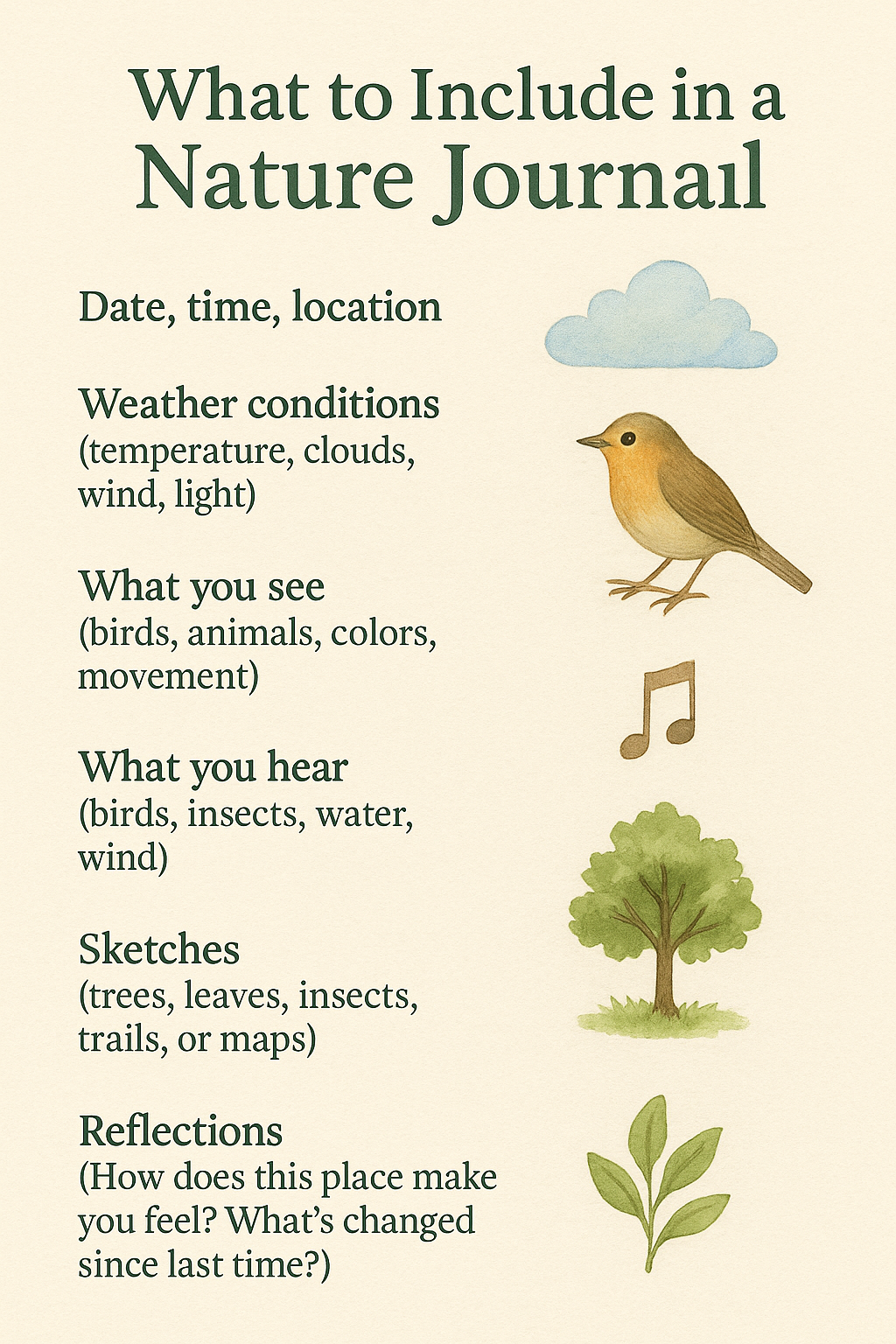Nature Journaling
In a fast-paced world full of screens, nature journaling is a refreshing way to slow down and reconnect with the natural world. Whether you're hiking a trail, sitting by a lake, or just spending time in your backyard, a notebook and a few minutes of quiet observation can deepen your outdoor experience.
No art skills or scientific knowledge required—just curiosity and a willingness to pay attention.
What Is Nature Journaling?
Nature journaling is the practice of writing, drawing, or recording observations about the natural world. It can include:
Wildlife sightings
Weather changes
Sketches of plants or landscapes
Notes about sounds, smells, and textures
Personal thoughts or reflections inspired by nature
Some people treat it like a field journal. Others treat it like a form of creative expression or mindfulness.
Benefits of Nature Journaling
Improves Observation Skills: You start noticing details—leaf shapes, bird calls, cloud movement—you might otherwise miss.
Reduces Stress: Taking time to sit, breathe, and write in nature has calming effects.
Boosts Memory and Learning: Writing things down helps you remember plant names, trails, or natural patterns.
Encourages Creativity: Even a short walk can become a source of poetry, sketches, or new ideas.
Builds a Record Over Time: You'll have a personal archive of seasons, hikes, and wildlife encounters.
What to Include in a Nature Journal
There’s no right or wrong way to do it, but here are some prompts to get started:
Date, time, location
Weather conditions (temperature, clouds, wind, light)
What you see (plants, animals, colors, movement)
What you hear (birds, insects, water, wind)
What you feel or smell
Sketches (trees, leaves, insects, trails, or maps)
Reflections (How does this place make you feel? What’s changed since last time?)
What to Bring on a Nature Journaling Outing
Notebook or Sketchpad (preferably with a hard cover if you’re journaling in the field)
Pen and pencil
Colored pencils or markers (optional but helpful for sketches)
Binoculars or magnifying glass (for observing birds or small plants/insects)
Small ruler or tape measure (if you want to log plant growth or track changes)
A backpack and water bottle
A sit pad or camp chair (if you’ll be journaling for a while)
Where to Practice Nature Journaling
You don’t need a national park to start. Try it:
In your backyard
At a city park
During a hike or camping trip
At the beach, a lake, or a riverbank
On your porch while watching the sunrise or sunset
The more familiar the place, the more you'll notice changes over time.
Tips for Getting Started
Start small: 10–15 minutes is plenty.
Don’t worry about being perfect—this is just for you.
Use bullet points if full sentences feel overwhelming.
Date every entry so you can track changes over time.
Go back and re-read your journal from time to time to see patterns or surprises.
Final Thoughts
Nature journaling doesn’t require fancy gear or expert knowledge—it just takes your attention. It’s a simple, rewarding practice that helps you connect to your surroundings and yourself. Next time you hit the trail or sit in your yard, bring a notebook and give it a try.



